If you’re saying, “Damselfly? What the heck is a damselfly?”…read on!
Recently I featured a damselfly nymph as one of my Weekly Puzzlers. If you don’t know much about this insect, here’s your chance to learn a bit more! (Continue all the way to the end to watch some fabulous videos)

Many people who see a damselfly think it is just a little dragonfly, but this is not true. The two ARE related, in that they both belong to the order Odonata, meaning “toothed ones.” In this order there are 5000+ different species, with roughly a third of them being damselflies. Both have an extendable hinged lower lip called a labium that they can shoot out like a dart to grab unsuspecting prey.
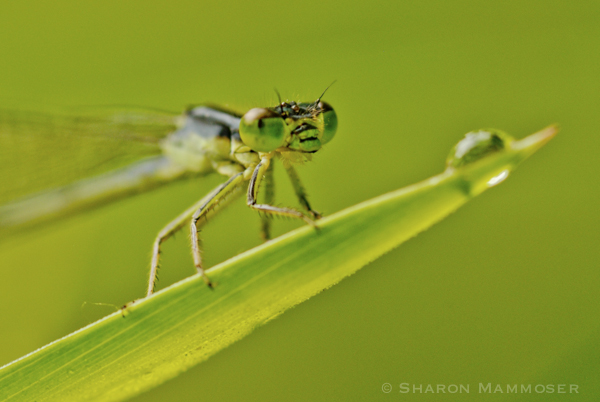
Here’s how you can tell the two apart:
First, damselflies are smaller and more delicate-looking– less stocky–and they fly less swiftly.
Second, when at rest most damselflies hold their wings above their bodies rather than spread out to the sides, as do dragonflies.
Lastly, the eyes of dragonflies meet on the tops of their heads –in damselflies they are widely spread and not touching.
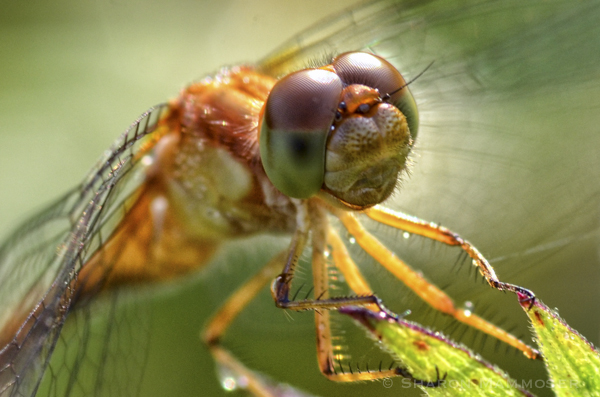
Here are some facts about damselflies:
1. They have been on earth for more than 300 million years! That’s a long time. Wow, what a successful group of insects! They were here long before the birds. Some Odonata had a wingspan of 30 inches–as big as a hawk!

2. Like their bigger cousins, damselflies are FABULOUS hunters, both as nymphs and adults. As adults, they grab prey in mid-air, using their legs like a basket to catch it. In the water, as nymphs, they are also fierce predators, catching other aquatic invertebrates like mosquito larva, mayfly nymphs and isopods.
3. Just like dragonflies, they cannot walk with their 6 legs. Instead they use them for catching prey and for perching when at rest. If you look closely at their legs you will notice they are covered with small, sharp-looking bristles. These help in trapping prey in mid-air.
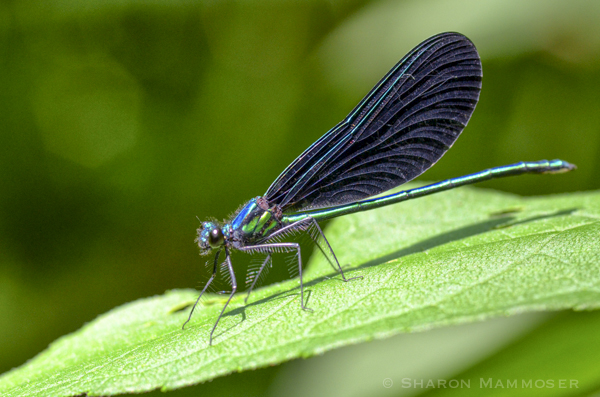
4. Damselflies are found throughout the world, everywhere except Antarctica. And, they can be found in just about every color of the rainbow, from turquoise, blue, green, purple, brown and gold. Which color is your favorite?
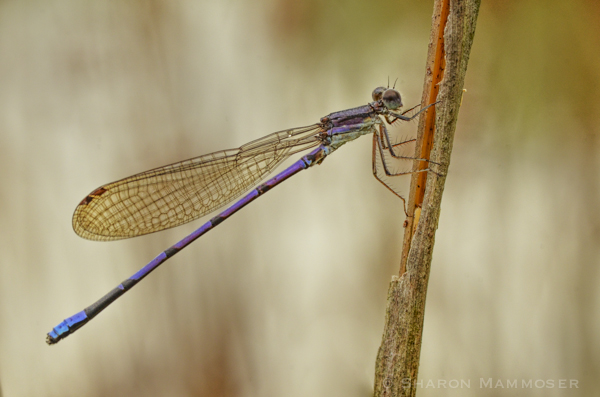
5. Both males and females have a long abdomen with 10 segments. Both also have clasping organs at the ends of their abdomen. Have you ever been kayaking or fishing and seen two damselflies locked together and flying around? Ever wondered about this? Yes, damselfly mating is quite interesting, especially for the female. First, the male clasps her behind the head with special claspers at the end of his abdomen, fitting into the space perfectly–like a key in a lock. Then the female bends her body upward to grasp the male with her clasping organs at the end of her abdomen. Before transferring his sperm to her, he scoops out any remaining sperm of rival damselflies. Sometimes you can see them flying around in this tandem position, known as the “wheel position.” It looks a bit like a heart, the way their bodies bend towards each other.
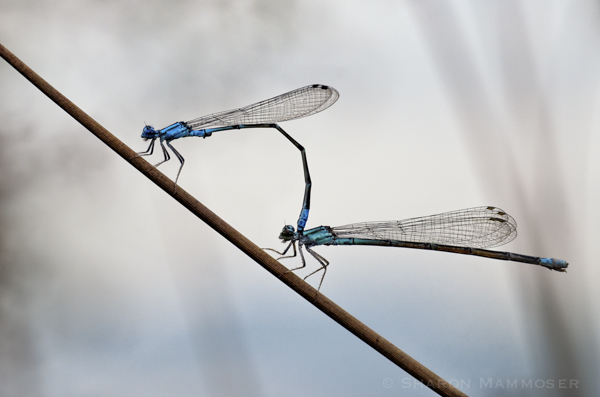
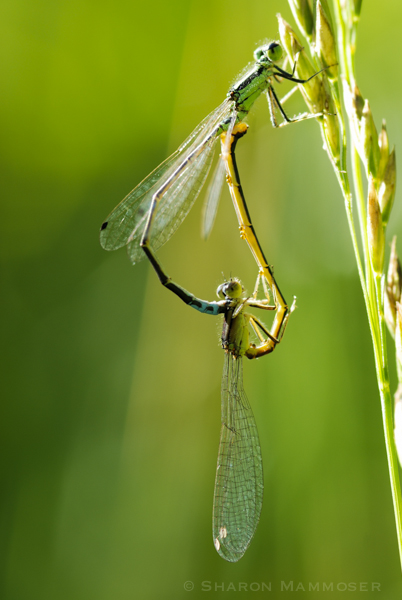
6. Damselflies (like dragonflies) DO have antenna. They are just so short most people never notice them.
7. Damselflies have many nicknames, including damsels, bog dancers and devil’s darning needles. This last one especially might give cause for alarm, but not to worry, these insects are harmless and do not sting or bite–unless of course you are a mosquito, fly, or other insect.
8. A cool fact that I just learned recently is that the female of many species of damselflies actually goes UNDER water to lay her eggs! She crawls down the stem of some submerged vegetation and will cut small holes in the plant stem where she will lay her eggs. All the while down there she is able to breathe because of oxygen surrounding her body and wings. When she is done, she travels back to the surface and then must be able to take off again into the air. Many damselflies become fish food during these tense moments.
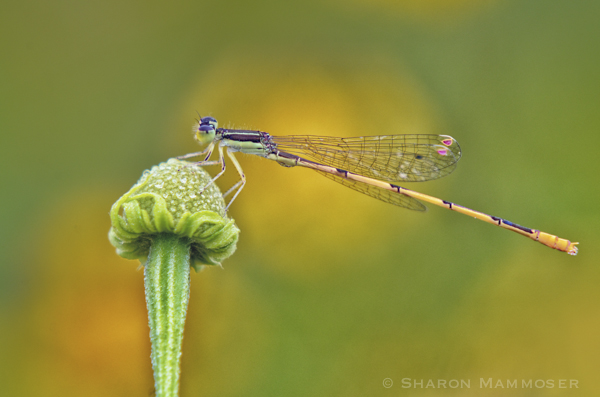 9. Their eggs hatch in 1-3 weeks and will stay in the water as nymphs for 2 months up to 3 years, depending on the species. They will go through 15 molts before finally crawling up a plant stem or rock and emerging from their nymphal skin as an adult with wings. This is an amazing thing to witness! I have seen it a few times in my lifetime, and am always blow away by it. Next time I see it, I will make a point to film it so I can feature it here on my blog! Have you ever been lucky enough to witness this?
9. Their eggs hatch in 1-3 weeks and will stay in the water as nymphs for 2 months up to 3 years, depending on the species. They will go through 15 molts before finally crawling up a plant stem or rock and emerging from their nymphal skin as an adult with wings. This is an amazing thing to witness! I have seen it a few times in my lifetime, and am always blow away by it. Next time I see it, I will make a point to film it so I can feature it here on my blog! Have you ever been lucky enough to witness this?
10. As nymphs they have 3 feathery-looking appendages at the ends of their bodies–these are their gills. Dragonfly nymphs have internal gills.
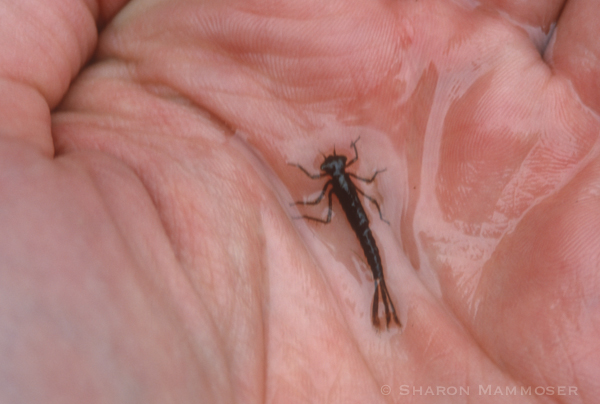
If you want to learn more about dragonflies, check out my post on these HERE, or, Check out this fabulous video from BBC Nature about the short life of a damselfly.
Hope you’re having a fabulous day! See you again soon.
Check out this video of a damselfly emerging as an adult! WOW, spectacular! Nature is so amazing! (Whether it happens in Scotland or the US, the process is the same! Don’t let the location turn you away)
Here’s a video from the BBC on damselfly mating:


Blown away.
Glad you liked it! Nature does have so many amazing animals!